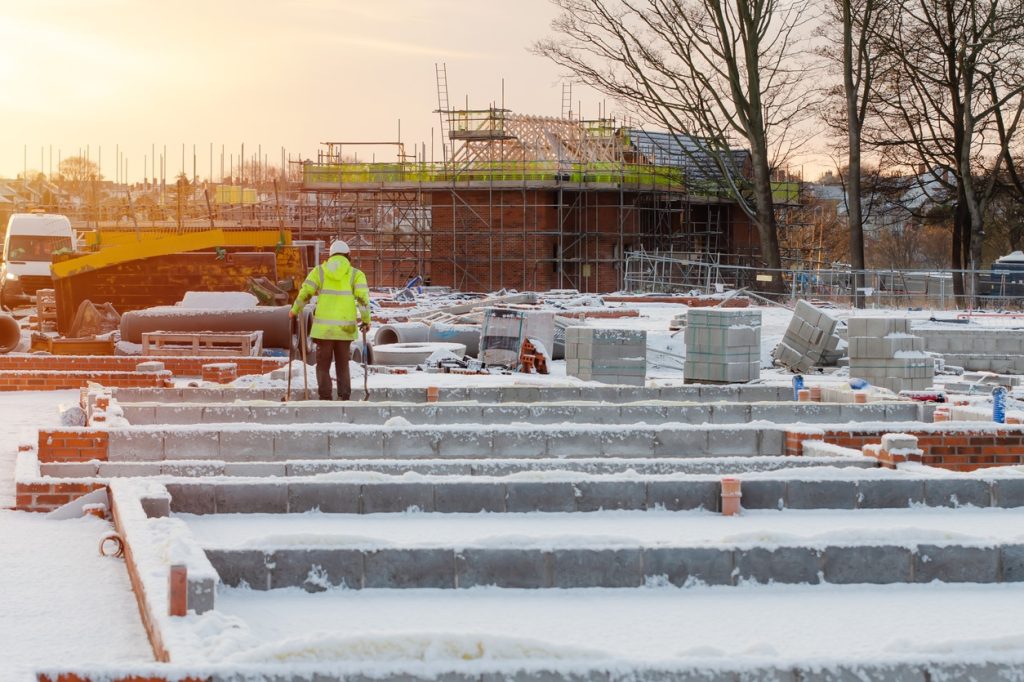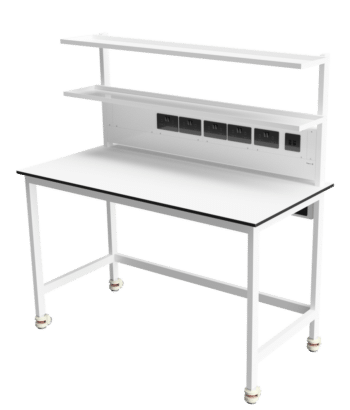Construction sites are full of health and safety risks and management challenges. The weather only adds to the list, with the most adverse conditions resulting in halted progress of construction projects.
Rain, snow, and extreme temperatures can compromise onsite safety, increase time frames, and risk finances. So, how can you effectively manage your project around adverse weather?
We’ve assembled this detailed guide to help you handle potentially powerful and unpredictable weather conditions during your next construction project. Discover how effective risk management and better knowledge of the dangers of extreme weather can help you.
How does Weather Affect Construction?
Different weather conditions come with challenges for construction – that much is a given.
The main effects on construction include health and safety risks for workers and issues with materials or equipment. The timespan for project completion can also increase, especially with unprecedented adverse conditions or bad weather that lasts longer than anticipated.
Extreme temperatures can affect machinery and halt progress, while heavy rain and snow can reduce visibility for workers using heavy machinery and driving vehicles carrying materials.
Health and safety risks are higher during most adverse weather spells. The hazards should undergo a thorough assessment to decide if work must stop until the conditions have cleared or if it can continue.
The safety of workers is paramount, and their guarantee of safety should come before profit or project length in adverse conditions.
How does Weather Affect Construction?
Firstly, risk management should begin with monitoring the closest weather stations to the construction site. This will provide a head start on planning for any adverse weather predictions, allowing you to consider the risks before it arrives.
However, bad weather might show up with little to no warning, meaning contractors have no time to prepare. For this reason, planning for all available scenarios should be carried out before construction starts.
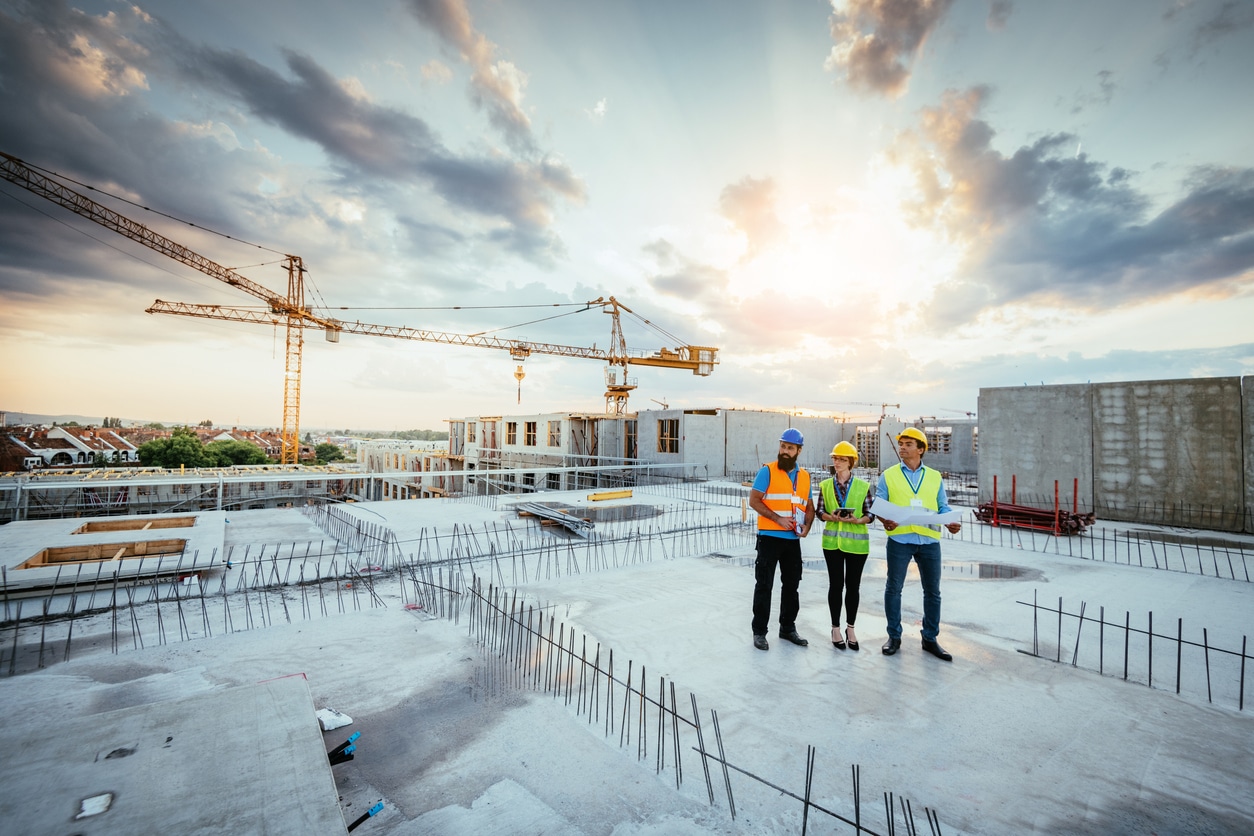
Time, money and workload should be the top considerations when managing risks.
Each risk should be evaluated to see if it could be avoided, eliminated, reduced, transferred or accepted. The level of impact should also be graded either low, medium or high.
For example, torrential rain might have a high impact since the water can cause erosion of materials. Flooding becomes more likely, which creates a serious risk of danger to life. Health and safety dangers combined with potential losses for materials and equipment means that action must be taken.
At this point, halting work is the only solution to eliminate the life-threatening risk. The risk management team for the construction site should begin looking at possible ways to reduce the impact on the workers without drastically increasing the time and cost of the project.
Implementing risk assessment management in the construction industry is one of the most effective ways to mitigate issues. Learn more with our guide to planning, monitoring, and controlling the measures involved with risk assessment.
BAD Weather Construction
To deal with adverse weather conditions, you need to be aware of what issues are posed by the different types you might encounter. Below, we’ve listed some common types of adverse weather, the issues they might bring and how you can deal with them.
Construction delay Due to Delay
Heavy rain can reduce visibility levels for vehicle drivers and machinery operators.
It can cause muddy ground which poses a risk to the health and safety of site workers. They could slip or fall on unstable surfaces, and if construction is still in the early stages, the risk of injury wouldn’t outweigh the benefit of the project continuing.
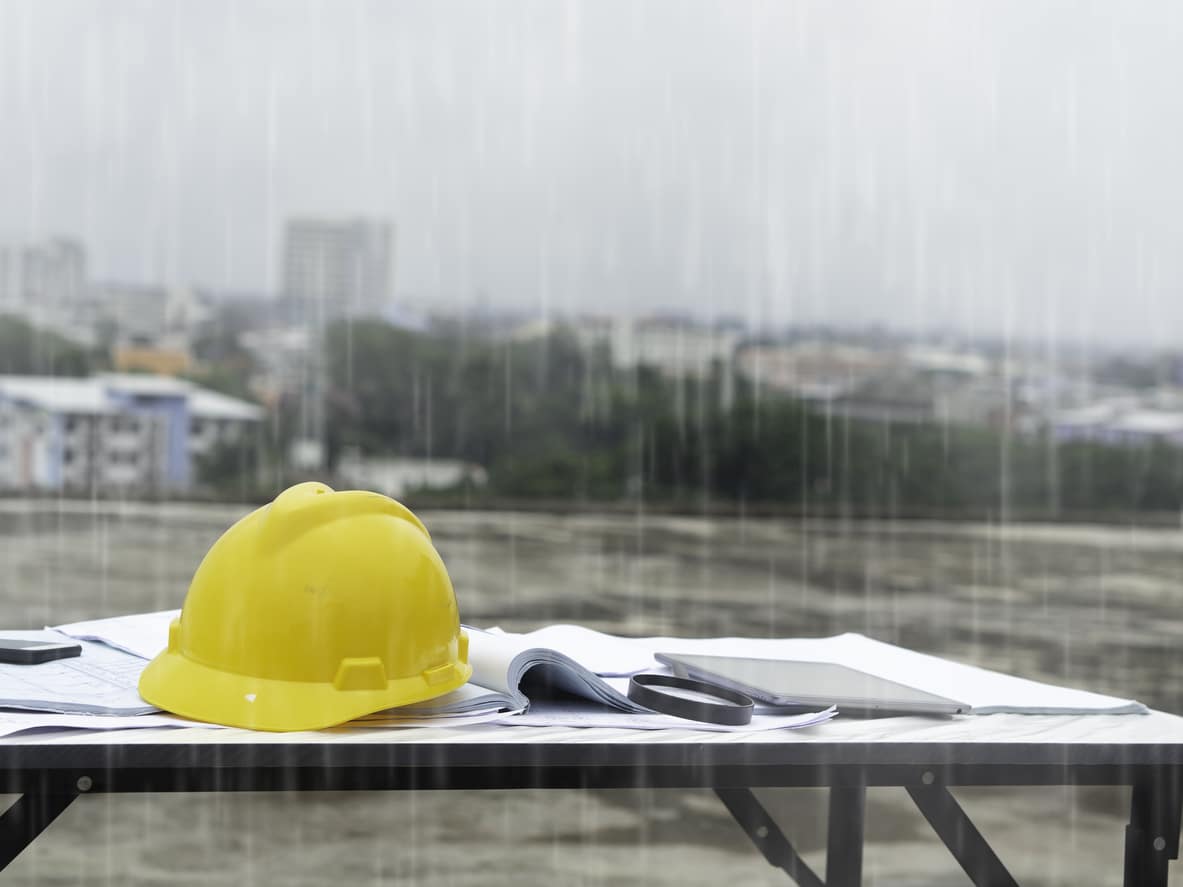
The risk of flash flooding from torrential rain not only poses a risk to the equipment and machinery, but it also poses a threat to life since construction workers might be working in confined spaces. If water begins to flow into these confined spaces, workers are at serious risk of drowning if they’re unable to be safely removed in time.
Dealing with rain can be tricky and can cause long delays to construction projects. Dehumidifiers will be needed to remove the moisture from the building materials and prevent erosion once the rain stops. Safe on-site water levels must also be maintained within confined spaces before work can continue.
Your contract should include cover for a few bad weather days, and these should be taken for extreme rain. However, if heavy rain is expected to last over a longer period such as weeks or months, then the timeframes might need to be adjusted to reflect the delays.
Construction Snow and Ice
Throughout the winter months, ice and snow can be an unavoidable threat to construction. With ice posing slip hazards and snow causing poor visibility, both can lead to delays. The best advice is to avoid beginning a construction project during the worst months, but this isn’t always possible.
Snow isn’t necessarily a big issue if it isn’t forecasted to stick around for long since workers can take time off and return once it has cleared. Concrete blankets can be staked above the construction to protect it, and depending on how far along the project is, heaters can be brought in to speed up the melting process.
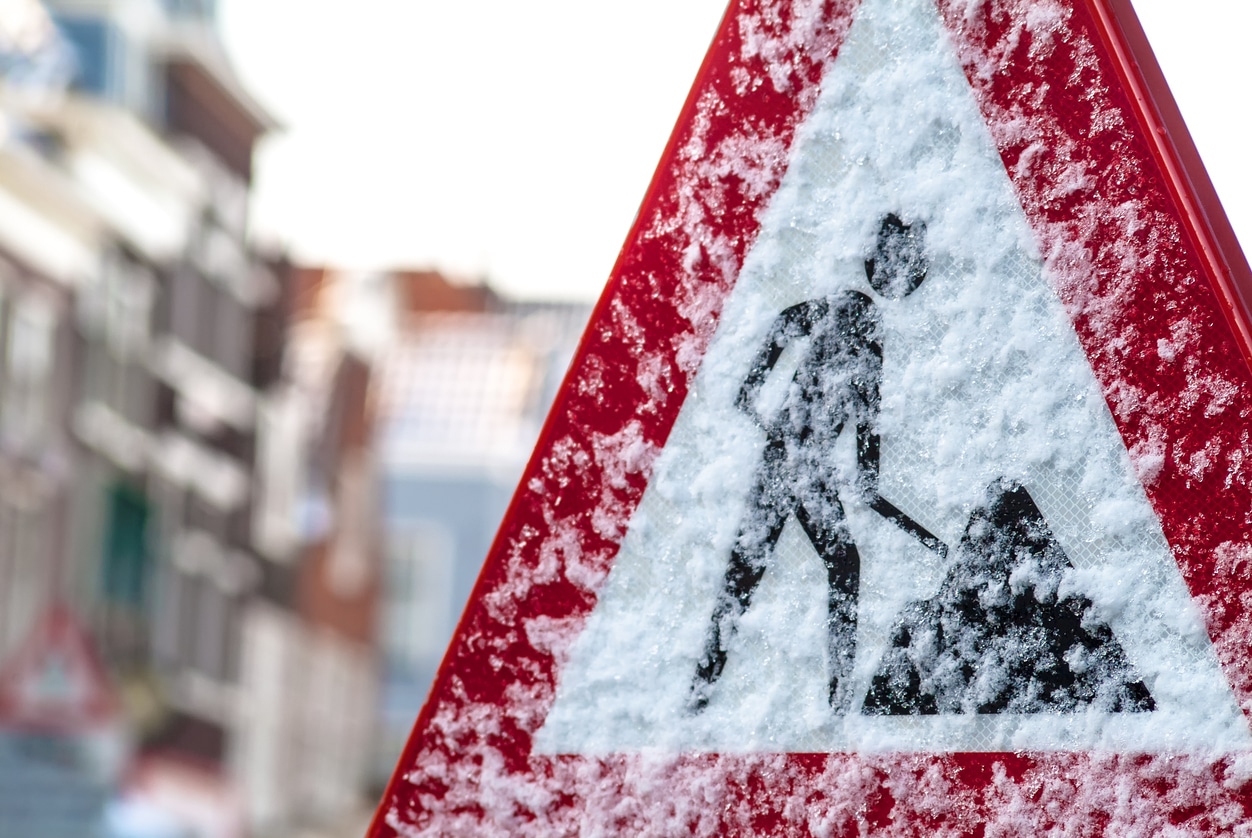
Similarly, to heavy rain, melted snow and ice can cause the same erosion issues.
However, the combination of snow and ice over a longer period can lead to issues with machinery and can even cause it to completely break down. This is a costly issue, and it can be time-consuming to bring in new machinery or get the old equipment fixed, so preparation should be made to prevent this.
Construction in Extreme Temperatures
Once temperatures drop below 4ºC, it starts to cause issues for construction. Workers can’t pour concrete in icy conditions, and rubber seals on equipment will harden. These issues can lead to costly delays.
High temperatures can be just as bad – the health and safety of workers are at risk due to the increased chance of dehydration or sunstroke. These can affect judgement and reaction times, meaning injury is more likely.
Extreme temperatures are usually easier to predict and plan around. For example, water should be provided, and breaks encouraged at regular intervals in extremely high temperatures. These risks are easily mitigated which can cost contractors less money because work doesn’t need to stop.
Careful planning should be used to try to avoid any situations where construction needs to be delayed due to the weather, especially when extreme temperatures are predicted.
Need to complete an upcoming construction project? Our dedicated team at InterFocus can help. Visit our homepage for more information on our bespoke fitted labs or contact our team at 01223 894833 to discuss what we can do for you.

